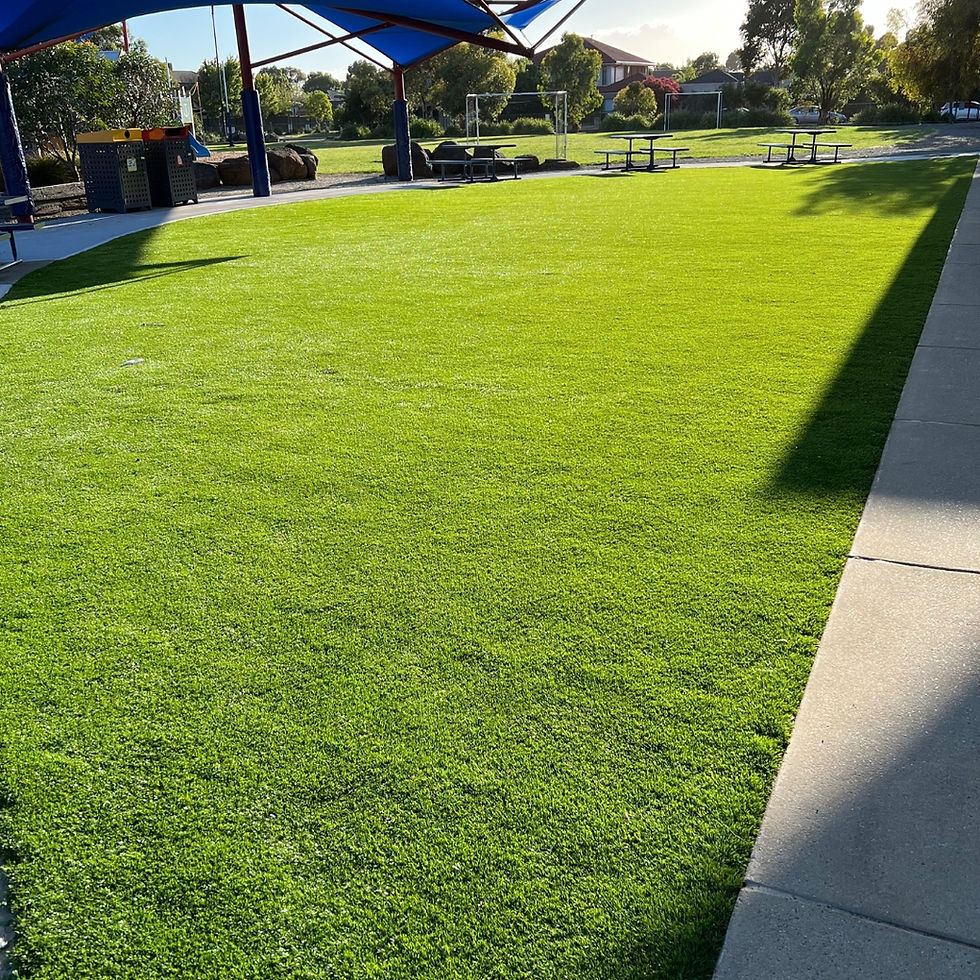Transform your space: Unveiling the advantages and installation process of artificial grass basketball courts
- Sporting Courts Australia

- Aug 16
- 4 min read
In today's world, artificial grass basketball courts are becoming increasingly popular, turning backyards, schools, and community spaces into lively environments. These courts are more than just a place to shoot hoops, they provide a range of benefits that go beyond the game. In this post, we will explore why you should consider installing an artificial basketball court and guide you through the installation process.
The Benefits of Installing an Artificial Basketball Court
Enhanced Playability
One of the standout features of artificial basketball courts is their improved playability. Unlike traditional asphalt or concrete, artificial surfaces offer better grip and shock absorption. This reduces the chance of injuries while ensuring players can enjoy a seamless game.
For example, a study by the National Center for Sports Safety found that players on synthetic courts experienced a 30% lower injury rate compared to those playing on traditional surfaces. Additionally, these courts simulate the feel of professional environments, allowing young athletes to practice effectively and hone their skills, setting them up for success on the court.
Year-Round Use
Artificial grass basketball courts are made to endure all types of weather, making them usable throughout the year. Whether it is sunny, rainy, or even chilly, players can engage in the game without worry.
This versatility translates into more play time and enables schools to make full use of the courts for sports classes and team practices. In fact, schools with accessible sports facilities have reported a 25% increase in student participation in physical activities.
Low Maintenance
Another significant advantage of artificial basketball courts is their minimal maintenance needs. Unlike natural grass or traditional courts that require regular care, synthetic courts only need occasional cleaning and inspection.
This simplicity not only saves time but also reduces long-term costs related to upkeep. A well-maintained artificial court can last up to 15 years, making it a smart investment for both businesses and schools looking to encourage sports participation.
Aesthetic Appeal
Beyond functionality, an artificial turf basketball court can greatly enhance the look of your area. With various colors and designs available, you can personalize the court to reflect your branding or size limitations.
Community Engagement
An artificial grass basketball court can be a focal point for community interaction. It provides a place for students of all ages to gather, promoting social connections and encouraging an active lifestyle.
Whether you are hosting tournaments, casual games, or larger community events, the court can be a hub for fitness and fun.
The Installation Process
Step 1: Planning and Design
The first phase of installing an artificial basketball court is planning and design. Determine the court's size, location, and any additional features, such as lighting or fencing.
Consultations with one of our professional project managers includes designing the court fits your needs or restrictions and maximizes the usability of the area. For instance, a standard full-size court is traditionally 28 metres long and 15 metres wide, but you can customize it based on space and requirements.
Step 2: Site Preparation
After finalizing your design, it's time for site preparation. This step typically involves excavation of the existing surface to allow for the base material. During this stage the area is cleaned, levelled and prepared for the base installation.
Step 3: Base Installation
The next step is to install a solid base, crucial for the court's durability and performance.
A concrete slab is the best option for the artificial grass basketball court installation, particularly for areas which will see high foot traffic. The more cost effective alternative is a compacted rock base. In this scenario, we will install a deep layer of crushed rock which is heavily compacted by machinery to reduce the risk of sinking or natural compaction over time. This rock layer also provides superior drainage compared to concrete. Once the rock layer is completed, a thinner layer of hardened and compacted stone dust is added. This heavily compacted fine rock allows for superior levelling and a smooth surface for the artificial grass installation.
Step 4: Surface Installation
Once the base is ready, it's time for the surface installation. This process involves rolling out professional grade, multi-purpose artificial sports grass, designed specifically for high impact, bouncing sports such as basketball and netball.
The artificial grass is then secured to the base using specific artificial grass glue or with turf pegs, depending on the base material.
Step 5: Line Marking and Finishing Touches
The final phase includes adding line markings and final details. Coloured artificial grass lines are bespoke cut and fitted into the multi-purpose artificial sports grass to suite the basketball court design, as well as any other sports which may be required. Most schools will often install a netball or tennis court within their basketball court to increase usability. Our multi-purpose artificial sports grass is available in a large number of colours, allowing us to individually colour each sport separately.
Step 6: Applying the sand layer
The artificial grass installation is never complete without its kiln dried sand. In order to keep the artificial grass performing at it's best, a layer of kiln dried sand is installed into the blades of the grass. This allows the blades to be held upright under use, while also adding a protective layer to the stitching, ensuring your basketball court endures all of the bouncing and jumping you can throw at it.



Comments